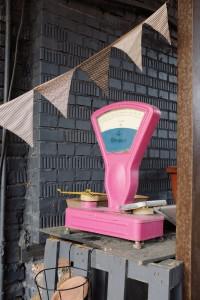
WRITTEN BY MARTA BETTINAZZI
In these changing times, we all need to find the time to prepare for the future and draft our strategy for success. This should also mean reevaluating our resources to see if we can make better use of them.
A good shift of perspective is to stop considering your intellectual property (IP) only as a cost (registration, maintenance). IP is an asset and you should learn how to make the best out of it. We will briefly look at the options that exist for exploiting intellectual property rights (IPR), then examine both the risks and the best practices to put into place in South-East Asia (SEA).
The best way to exploit your IPR depends on the kind of IP you own, but it can be summarised in two big categories: licensing and selling.
Selling means that you permanently transfer your IP (or better, the economic rights connected to it) to someone else. For example, you sell your patent to a bigger company that can mass-produce the invention you have patented or, more commonly, your IP is purchased as part of a merger-and-acquisition operation. In this case one company would acquire all the IPR that were part of your assets (trade marks, copyrights, patents, etc.). A famous example is the acquisition of WhatsApp by Facebook for the unimaginable price of USD 21 billion (more info here).
Licensing means that you, as an IPR owner (licensor), authorise someone to use your rights (licensee) in exchange for an agreed payment (fee or royalty).
This can allow you to expand your global presence and also ensure a source of revenue. On the other hand, the licensee can manufacture, sell, import, export, distribute and market various goods or services that they may otherwise not have had the rights to.
We can group the license agreements in three categories: Technology License Agreement; Trademark Licensing (and Franchising) Agreement; Copyright License Agreement.
Often these kinds of agreements are combined with and/or included in broader contractual settings, for example distribution contracts.
Therefore, the first step in an effective IP strategy is to review the agreements you already have in place with your partners and distributors to be sure that they include clear rules regarding the use of your IP.
In SEA it’s not uncommon for local distributors to register the IP (usually the trade marks) of their international partners under their own name. This way the local company acquires de facto an exclusive license on the product(s) of the SMEs. In fact, if the local company is the owner of the trade mark, it can prevent others from using it, including other companies authorised by the SME (the original owner of the trade mark). It might be said that you are in a marriage with your partner, and you might need an expensive and lengthy divorce (judiciary decision) to be able to leave it.
Before entering any kind of distribution agreement, give special attention to the difference between the registration of the trade mark (and IP in general) and the registration of the product itself. The latter is an administrative step needed to import a ‘new’ product into a country, but it does not ensure any protection for your IPR.
In other words, if your distributor is offering to do the product registration to allow you to import goods into the country, this does not imply that he/she is also going to help you with the registration of the trade mark or patent (or any other IP).
Keep in mind that a formal licensing agreement is possible only if the IPR you wish to license is also protected in the country or countries of interest to you. Without registering your IP in the country, you are not only unable to properly license it, but you also have no legal right to put any restriction on its use by anyone else.
Despite provisions in international treaties, courts and administrative bodies in SEA seldom extend protection to well know trade marks (see, as a reference, the famous IKEA case in Indonesia). Only Malaysia and Singapore ensure some level of protection for de facto trade marks and take into account the use of a non-registered trade mark.
On a side note, do not forget to consider registering your trade mark in local scripts as well, for example in Thailand, Malaysia, and Myanmar. This ensures complete protection for your trade mark, limiting the possibility of cheaper copycats riding on your reputation by using a transliteration of your trade mark.

|
Also, note that many countries in SEA require license agreements to be registered if they are to be enforced. Some countries, like Thailand, also require the registration of trade mark licenses, others, like Vietnam, only require the registration of technology transfers.
To recap, be sure to register your IP before entering into any agreements with local partners. If this is not possible in the immediate future at least include a clause in your agreements to prevent the local company from registering your IP ‘for you’.
Technology transfer agreements can be very remunerative, but can also put your business at risk — you could be creating your own, stronger competitor. Therefore, it is advisable to either license a technology you have patented in the country where your counterpart will operate or you license something (an idea, a technology, some know-how, a recipe, etc.) that is secret. In this case, you have to be sure that your partner is bound by the same level of secrecy.
Reality is not that simple. Even if something is patented (and therefore publicly disclosed, for example in Europe) local companies might not be advanced enough to copy it, and may be interested in entering an agreement with you to acquire the know-how surrounding the patent.
This might present itself as an unpredicted and very welcome source of revenue for you, but you are running the risk of your new partner becoming your competitor in the future.
A good way to balance this issue is to bind your partner to secrecy regarding the unpatented part of the technologies.
As mentioned, technology transfers are not always encouraged by legislation in SEA and can often be subject to registration requirements. This means that if the agreement is not registered at the public office it cannot be enforced (in cases of breach or liability). Some countries have also limitations regarding the kind of technologies that can be transferred to and from their territory.

|
In short: the best strategy is always to patent all your cutting-edge technologies in as many countries as possible (including new markets like SEA); combine a good patent strategy with a high level of secrecy and be aware of local legislation.
A final thought: do not forget to prepare all your contractual documents in both English and the local language and be sure to agree and sign the local language version. Most of the courts in SEA can only accept (and understand) documents in the local language. A later translation could be not only expensive but also problematic; your counterpart could propose their own translation of the text, which could lead to endless interpretation problems.
For more information you can have a look at our guides on trade marks, patents and technology transfers, or at our country factsheets.
Do not hesitate to reach out to the Helpdesk if you have any questions on IP in SEA.
Marta Bettinazzi
IP Business Advisor
South-East Asia IPR SME Helpdesk
Details
- Publication date
- 4 May 2020
- Author
- Executive Agency for Small and Medium-sized Enterprises
